


A Synergistic Relationship
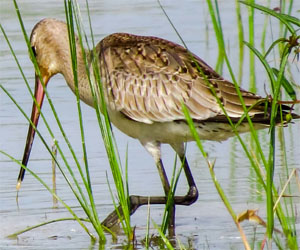
Birdwatching, the age-old hobby of observing birds in their natural habitats, goes hand in hand with the vital mission of conservation. It's not just a recreational pursuit; it's a powerful tool for raising awareness, gathering data, and fostering a deep connection with the natural world. In this article, we will explore the synergistic relationship between birdwatching and conservation.
Fostering A Love For Nature: Birdwatching introduces people to the beauty and wonder of the avian world. It's a gateway to a lifelong love affair with nature. By fostering an appreciation for birds and their habitats, birdwatching enthusiasts are more likely to become advocates for conservation.
Citizen Science: Birdwatchers often contribute to valuable citizen science projects. Organizations like the Audubon Society and eBird encourage birdwatchers to record their sightings and observations. These data provide crucial insights into bird populations, migration patterns, and habitat trends, aiding in scientific research and conservation planning.
Monitoring Bird Populations: Birdwatchers, with their keen eyes and field experience, are excellent at monitoring bird populations. They can detect fluctuations in bird numbers, identify rare or threatened species, and report unusual events like mass migrations or bird die-offs. This information is vital for conservationists to understand the health of ecosystems.
Habitat Protection: Birdwatchers often advocate for the preservation of important bird habitats. Birding communities and organizations engage in campaigns to protect critical nesting areas, stop deforestation, and promote the establishment of nature reserves. This grassroots effort can have a significant impact on local and global conservation initiatives.
Education And Outreach: Birdwatching is a compelling tool for environmental education. Bird clubs, workshops, and guided tours offer opportunities for people of all ages to learn about birds and their conservation needs. These experiences help individuals connect with the natural world and inspire them to support conservation efforts.
Promoting Responsible Tourism: Birdwatching can drive sustainable tourism. Birdwatchers who respect the birds' well-being and habitats can set an example for other tourists. This, in turn, can encourage the development of eco-friendly tourism practices that benefit local economies and preserve natural areas.
Conservation Funding: Birdwatchers often contribute to conservation through donations and membership fees to organizations dedicated to protecting birds and their habitats. The funds raised by these organizations are used for research, habitat restoration, and advocacy.
Lobbying For Conservation Policies: Birdwatching communities can be powerful advocates for bird-friendly policies. They can lobby for legislation to protect migratory birds, ban harmful pesticides, and promote sustainable land use practices. Their collective voice can influence decision-makers at various levels of government.
Birdwatching is more than just a hobby; it's a force for conservation. By connecting people with nature and equipping them with the knowledge and passion to protect it, birdwatching enthusiasts play a crucial role in the preservation of bird species and their habitats. This harmonious relationship between birdwatching and conservation is a testament to the positive impact that individuals, working collectively, can have on the health of our planet. So, if you're a birdwatcher or considering taking up the hobby, remember that your observations and actions can contribute to the preservation of the avian world for generations to come.
Unleash Your Inner Shredder
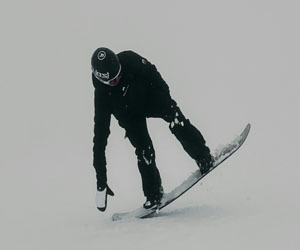 3. Progress To Grabs: Grabs are stylish tricks that involve reaching down to touch your snowboard while in the air. Common grabs include the indy grab (front hand on the heel edge), mute grab (front hand on the toe edge), and melon grab (back hand on the heel edge). Experiment with different grabs to add flair to your jumps.
3. Progress To Grabs: Grabs are stylish tricks that involve reaching down to touch your snowboard while in the air. Common grabs include the indy grab (front hand on the heel edge), mute grab (front hand on the toe edge), and melon grab (back hand on the heel edge). Experiment with different grabs to add flair to your jumps.
4. Learn Spins: Spinning in the air adds a dynamic element to your riding. Start with 180-degree spins and work your way up to 360s and beyond. Focus on your shoulders and upper body to initiate the spin while keeping your lower body aligned with the board.
5. Perfect Your Buttering: Buttering is a stylish ground trick where you shift your weight and flex your snowboard to create fluid, spinning movements. It's a creative way to showcase your skills on the slopes and add some freestyle elements to your riding.
6. Progress To Rails And Boxes: Once you're comfortable with basic tricks, you can venture into the terrain park to try your hand at rails and boxes. These features provide opportunities for sliding and grinding tricks. Start with easy boxes and rails and work your way up as you gain confidence.


Where Thrill Meets Nature
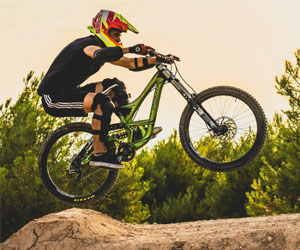 Unlike traditional road biking, mountain biking offers an escape from the hustle and bustle of city life. Riders have the opportunity to explore remote and untouched natural landscapes. These less-accessible areas are often devoid of crowds, providing the solitude and tranquility that many nature enthusiasts seek. Mountain bikers have the privilege of delving deep into the wilderness, where they can revel in the serenity of the outdoors.
Unlike traditional road biking, mountain biking offers an escape from the hustle and bustle of city life. Riders have the opportunity to explore remote and untouched natural landscapes. These less-accessible areas are often devoid of crowds, providing the solitude and tranquility that many nature enthusiasts seek. Mountain bikers have the privilege of delving deep into the wilderness, where they can revel in the serenity of the outdoors.
The diversity of environments that mountain bikers can explore is astounding. From dense, verdant forests to arid, rocky deserts, there's a terrain to suit every rider's preference. Whether one desires the lushness of the woods or the technical challenges of rocky trails, mountain biking offers a variety of settings to explore.
Mountain biking encourages an environmentally conscious approach to outdoor adventure. Riders are typically aware of the importance of preserving the natural environment and adhere to the principles of "leave no trace." This responsible ethos includes not disturbing wildlife, avoiding littering, and respecting trail rules and guidelines. This ensures that the beauty of the outdoors remains intact for generations to come.
The sense of adventure and camaraderie further enhances the experience of mountain biking in the great outdoors. Riding with friends or participating in group rides allows riders to share the thrill and magnificence of the journey. The bonds formed on the trail often lead to lasting friendships and a shared passion for outdoor exploration.
A Journey Of Innovation And Growth
 The Frisbee's origins can be traced back to the 1950s, when American inventor Fred Morrison and Warren Franscioni developed the first plastic flying disc. Initially, it was just a toy, popular for tossing around in backyards and parks. However, the transformation from a casual plaything to a sport began in the 1960s, driven by a group of students at Columbia High School in Maplewood, New Jersey.
The Frisbee's origins can be traced back to the 1950s, when American inventor Fred Morrison and Warren Franscioni developed the first plastic flying disc. Initially, it was just a toy, popular for tossing around in backyards and parks. However, the transformation from a casual plaything to a sport began in the 1960s, driven by a group of students at Columbia High School in Maplewood, New Jersey.
In 1968, these students, led by Joel Silver, introduced a new game that involved using a Frisbee to score goals. They called it "Ultimate Frisbee," laying the foundation for what would become one of the most iconic and widely recognized flying disc sports. Ultimate Frisbee's self-officiation, competitive structure, and strong emphasis on sportsmanship set it apart from casual Frisbee tossing and contributed to its growth as a legitimate sport.
The formation of governing bodies played a crucial role in the transformation of Frisbee into a sport. In 1979, the Ultimate Players Association (now USA Ultimate) was established to provide structure and consistency to the growing Ultimate community. Standardized rules and competitive leagues began to emerge, setting the stage for the development of a sport with a global presence.
Ultimate Frisbee's transformation was not limited to the United States. The sport spread internationally, with various countries adopting the game and forming their own national associations. This global reach is evident in the World Flying Disc Federation (WFDF), which oversees and promotes flying disc sports around the world.
The Crucial Role Of Team Dynamics In Paintball
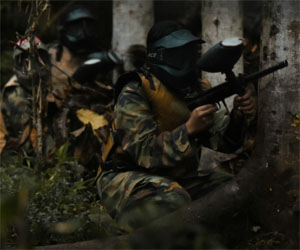 The Power Of Team Dynamics In Paintball
The Power Of Team Dynamics In Paintball
Team dynamics encompass the interactions and coordination between paintball players. Whether you're a seasoned pro or a novice, the way your team functions can significantly impact your performance and the outcome of the game.
Here's why team dynamics matter:
Strength In Numbers: Paintball is a team sport, and the synergy between teammates is crucial. A well-coordinated team can overcome individual weaknesses, outmaneuver opponents, and achieve victory.
Effective Communication: In paintball, communication is the lifeline of teamwork. Sharing information about enemy positions, plans, and actions helps the team adapt and respond to the evolving situation.
Cover And Support: Teammates can provide cover fire and support, creating opportunities for their allies to advance, reload, or take strategic positions. This teamwork is essential for maintaining control on the battlefield.
Strategic Combinations: Teams can devise strategies that involve various roles, such as snipers, assault players, and defenders, working in tandem to achieve a common goal. Combining these roles strategically is a hallmark of effective team dynamics.
Unity And Morale: A cohesive team fosters unity and high morale, which, in turn, boosts confidence and motivation. This positive atmosphere can lead to better decision-making and performance.
Key Aspects Of Effective Team Dynamics
Communication: Open and clear communication is the cornerstone of effective team dynamics. Players should use radios, hand signals, or verbal cues to convey vital information to their teammates.
Roles And Responsibilities: Define roles within the team based on each player's strengths and preferences. This helps in optimizing the team's performance and allowing players to focus on their specific tasks.
Trust And Support: Trust your teammates and provide support when needed. Trusting that your teammates will cover you or execute their part of the strategy is vital for effective teamwork.
Adaptability: Team dynamics should allow for adaptability. Paintball scenarios can change rapidly, so the team must be flexible and ready to adjust their tactics as needed.
Elevating Your Game
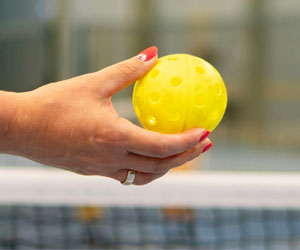 Stacking: Stacking is a strategic positioning technique that can give your team a tactical advantage. By positioning yourselves in a specific formation on the court, you can exploit your opponents' weaknesses and create opportunities for aggressive plays. Stacking is particularly effective when you have players with different dominant hands or strengths.
Stacking: Stacking is a strategic positioning technique that can give your team a tactical advantage. By positioning yourselves in a specific formation on the court, you can exploit your opponents' weaknesses and create opportunities for aggressive plays. Stacking is particularly effective when you have players with different dominant hands or strengths.
The "Two-Up, Two-Back" Strategy: This strategic innovation emphasizes teamwork and court coverage. Two players move forward to control the net, while the other two players stay back to cover the baseline. This approach ensures that the net is controlled and that any balls hit deep to the back of the court are effectively covered. It's a great way to maintain a balanced defense and offense.
Cross-Court Dinking: Dinking, a short, soft exchange over the net, is a fundamental aspect of pickleball. Cross-court dinking involves hitting the ball diagonally across the net, which can be more challenging for your opponents to handle. This strategic innovation keeps your opponents off balance and opens up opportunities for unforced errors.
The Erne Shot: The Erne shot is a daring strategic move that involves leaping to the side of the court while your opponent is hitting a ball down the line. It's a high-risk, high-reward maneuver that can catch your opponent off guard and create open spaces on the court.
The Use Of Spin: Applying spin to the ball can add a new dimension to your game. Backspin can make it challenging for your opponent to control the ball, while topspin can give your shots more depth and accuracy.